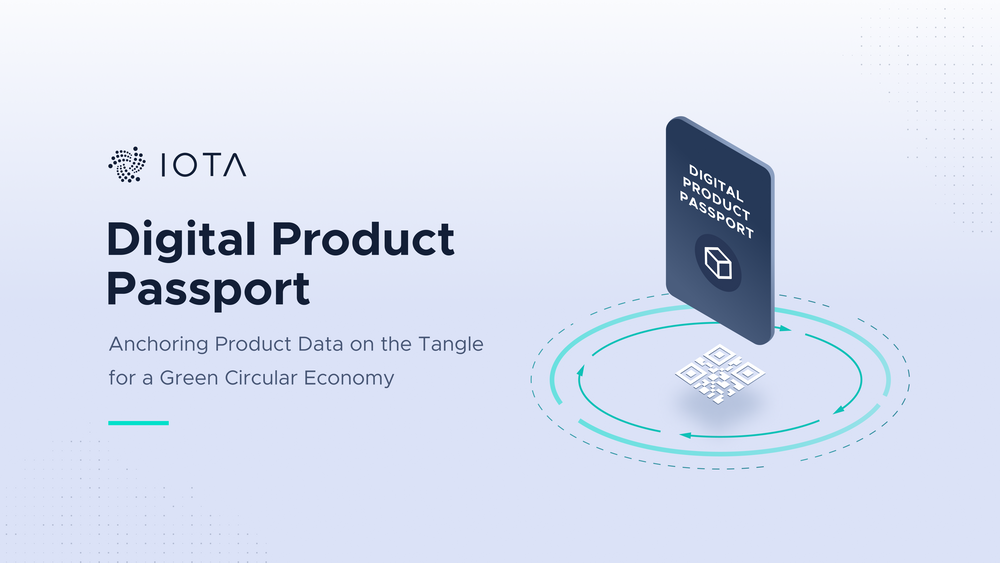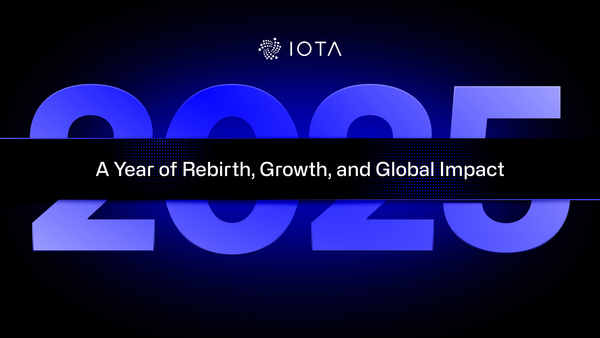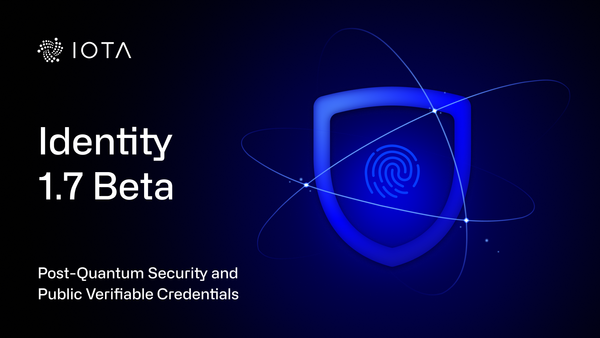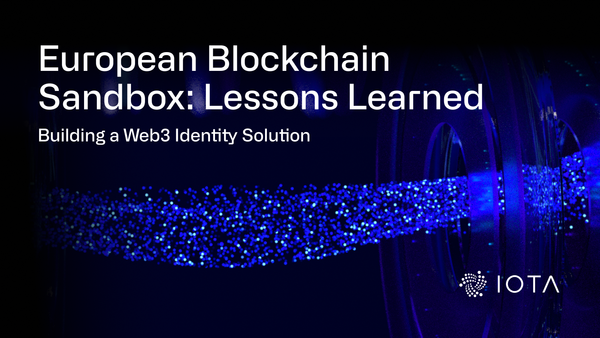Digital Product Passport
Anchoring Product Data on the Tangle for a Green Circular Economy
TL;DR:
IOTA is a Layer 1 distributed ledger that offers several frameworks on top of it that can be used to build truly green circular economy services. The development of a Digital Product Passport (DPP) across different industries is a concrete example of how data integrity can be established with a next-generation energy-efficient distributed ledger technology (DLT). The IOTA Foundation is involved in several initiatives that, as a result, will evaluate the development of DPP solutions on top of the IOTA protocol. Due to its innate transparency, DLT helps ensure data integrity of the information contained in a DPP. IOTA’s DLT goes one step further, offering a protocol with a different consensus mechanism as a solution to the energy consumption problem of most DLTs, making it the ideal choice for DPPs.
Imagine an easy-to-use, immediately accessible, secure, and shareable digital passport for every consumer product: from electric toothbrushes to your cars, coffee machines to the refrigerator. The passport contains information about the origin, production, delivery, use, end, and recycling of that product, all augmented by a set of traceable and verifiable data. This data compiles a tangible story about the product’s life cycle and can be used to reassure consumers of the product’s origin, confirm without a doubt its green credentials, and inform manufacturers how to create the next generation of greener, more durable, and more efficient products.
Welcome to the Digital Product Passport (DPP), which the IOTA Foundation has worked towards with several recent initiatives. Applying IOTA’s distributed ledger technology (DLT) solves several obstacles to achieving a scalable DPP. Before exploring this in detail, let’s look at how DPPs play a role in the circular economy.
The circular economy
The circular economy is a framework that aims to solve the global challenges of climate change, including the 9th Sustainable Development Goal, which targets industry, innovation, and infrastructure to solve issues from waste management to pollution. The main drivers of climate change are human activities and socio-economic factors that influence how industrial and economic processes impact the environment. To create sustainable living, we need sustainable industry as well as sustainable behavior and green practices on both the corporate and individual levels. Here, technology is an important medium that can provide incentives but also impose regulations and enforce compliance with those regulations.
Incentivising and monitoring recycling and regulatory compliance is not a new topic, and we are surrounded by existing technology and standards that can help us kickstart new circular economy services. What is missing are two aspects that need to be addressed in order to embed the circular economy into traditional business: data integrity and data presentation. For data integrity, distributed ledger technology (DLT) can provide the necessary functionalities, and for data presentation, the DPP is a powerful tool to exhibit the required information.
A report by the Ellen Macarthur Foundation on the circular economy potential suggests that an interplay between “value drivers” of a circular model needs to be established and that the potential benefits offered by a network of connected devices and information can ensure that businesses around the world eradicate waste and use resources effectively. A DPP is one way of supporting the circular economy with a network of connected devices and information.
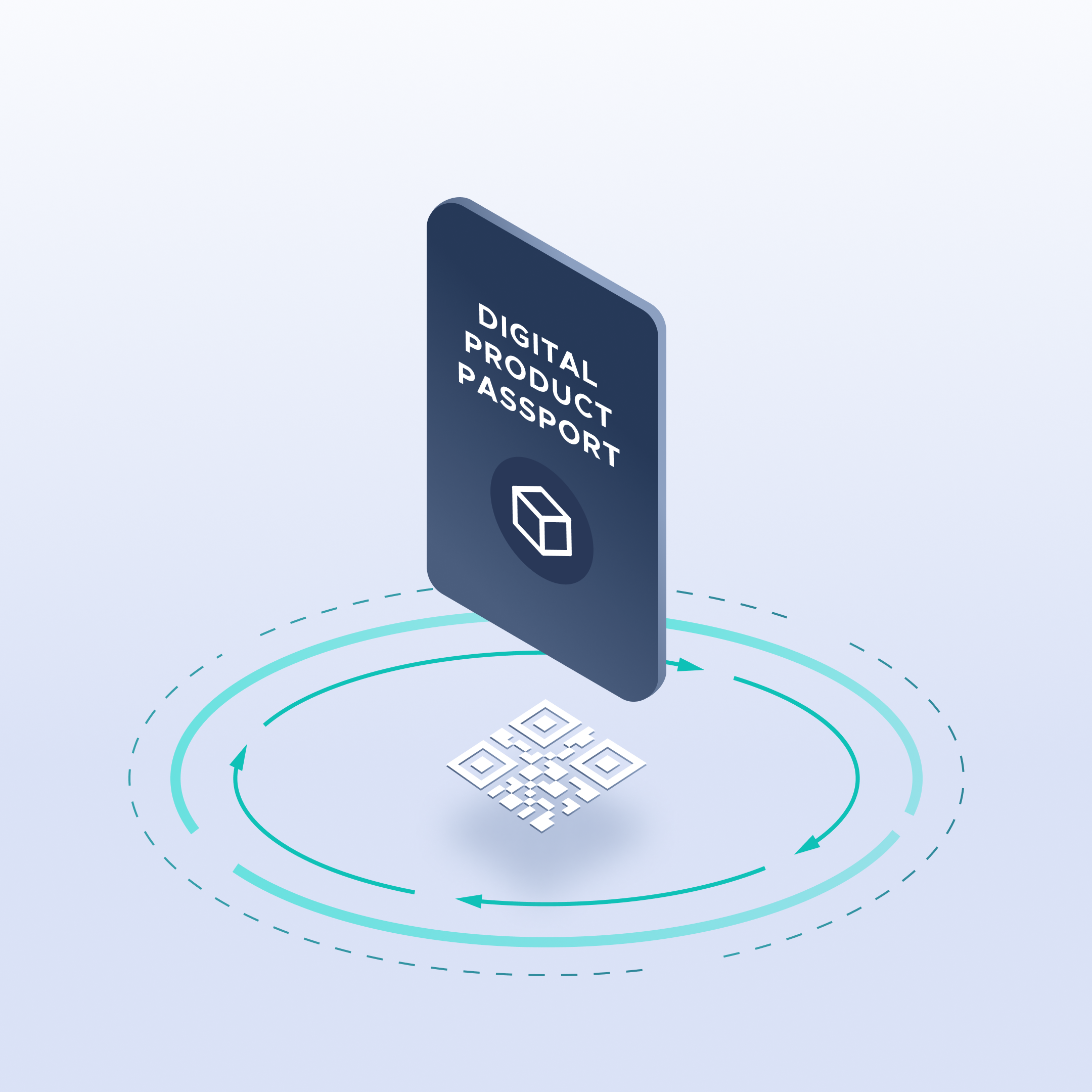
What is a Digital Product Passport?
The main reason why the world needs DPP is to keep products in circulation, thereby reducing the extraction of new resources. To achieve this, information about a product gathered throughout its lifecycle – from manufacturers, retailers, consumers, remanufacturers, and others – is collected into a digital passport to ensure that the product can easily be traced, returned, and where possible reused. In addition, a DPP enables the condition monitoring of high-risk, high-value goods during transport, storage, and use, which expands the product’s lifetime. This leads to recycling and reusing of the product’s materials and the disposing of harmful materials and chemicals, but also to a better understanding of how existing materials can be improved to last longer, pollute less, and be more recyclable. Several markets offer incentives for product reuse, but these incentives require the adoption of new technologies into traditional value chains and their interoperability in order not to remain in “walled gardens”. Tokenization of assets and rewards enables the creation of direct, interoperable incentives that are not bound to one manufacturer or operator.
The image below shows how a digital product passport takes center place in a circular economy, supporting all the major trends of such an economy – from sustainable recycling to sustainable manufacturing – by monitoring four key stages of a product’s lifecycle, from design to recycling and reuse.
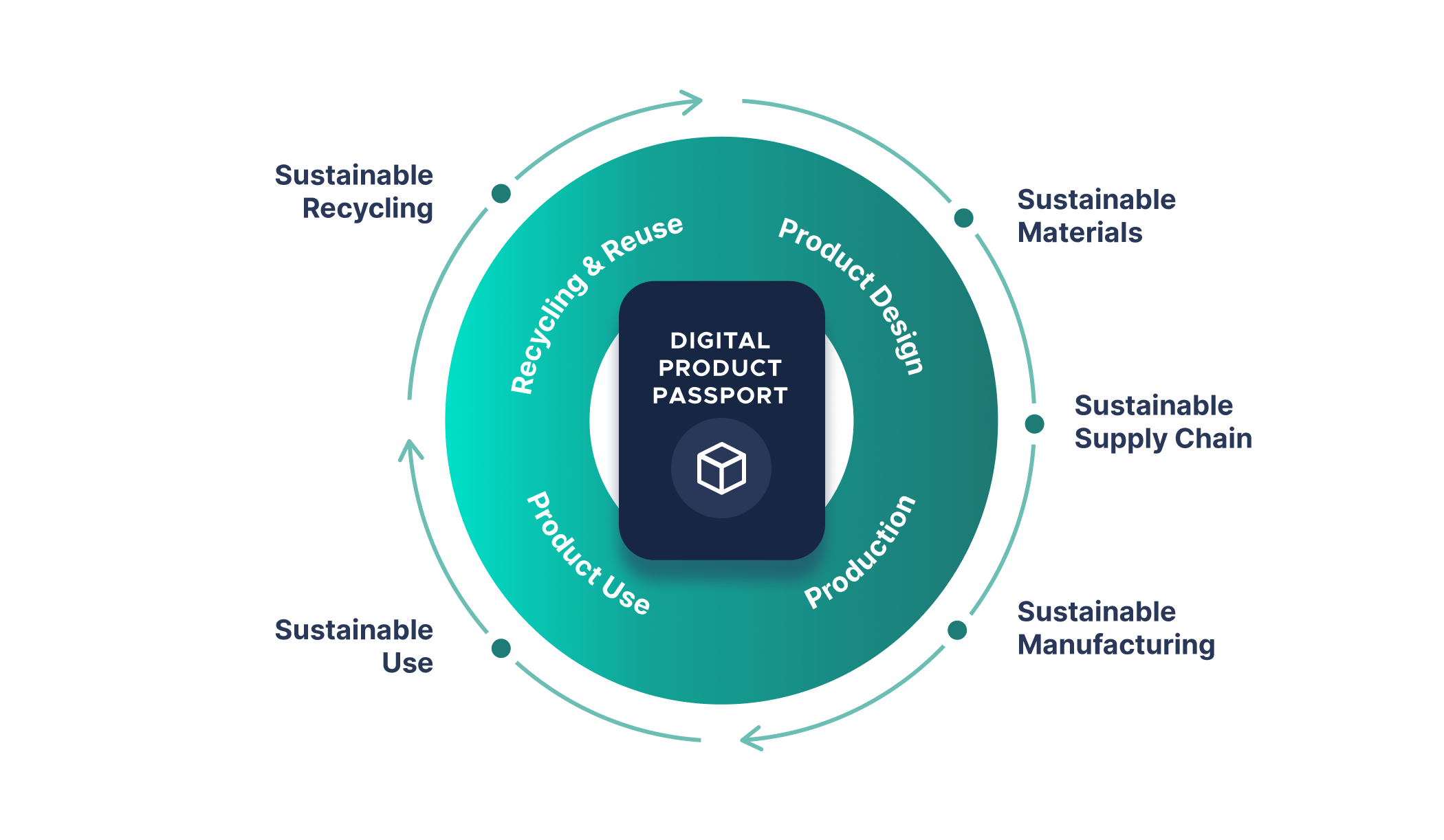
The sustainability trends outlined above demand transparency in supply chains and access from all actors involved in the product’s life cycle. The DPP is a key enabler in this new situation of real-time updates and insights by all stakeholders, from producers and transport organizers to retailers and consumers.
The DPP creates a digital twin of the product to record the chain of lifecycle events (such as manufacturer data, ownership, duration of use, reuse, recycling, and so on) into the ledger, which will influence how products are handled throughout the lifecycle. Each product data will be enrolled into the product's digital passport, opening up the possibility for auditors to verify circularity claims. Nevertheless, the digital twin of a product can only be created if the product can be uniquely identified. Mass consumption products in the database have the same barcode, making it hard to trace the product on an item level. To resolve this issue, GS1 (an organization that develops and maintains standards including barcodes) released new global specifications (Digital Link and EPCIS) that enable the creation of unique identifiers for each product item and the standardized sharing of information about the physical product and its movement.
These standards represent the basis for the creation of a new generation of supply chains, which are transparent and trusted and provide additional value to all stakeholders, from manufacturers to consumers, and again for reuse. Furthermore, item-level identification can serve as a disruptive innovation, launching new business models for the circular economy that will be worth $4.5 trillion by 2030 (according to this paper).
Beyond state of the art: tokenization and Digital Product Passport 2.0
The growth of the tokenization economy and the adoption of digital assets and NFTs (Non-Fungible Tokens) encourages us to see any value as a potentially digital, transferable, and interoperable asset. A DPP is a digital twin of a real asset attached to its digital representation. This means that any development or change to a product will be recorded by information on the cloud that reflects that change. Furthermore, in the case of a tokenization concept, a DPP could provide rewards for an action linked to a product, such as issuing a token when the product is recycled.
Applying the NFT concept to just one aspect of the product life cycle – such as the consumer market or the supply chain – opens up multiple use cases. For example, a supply chain could offer consumers tokens as incentives to recycle the product, or immutable carbon credits could be given to producers, transport providers, and recycling companies that exhibit “green behavior”. An NFT can be generated as a digital twin of a product that contains the product’s history (for example, a user memory, location history, an image from an event, past owners, or previous recycling) that can be accessed digitally. This approach motivates consumers to recycle the product and continue its story. Not only does this closely bridge the creator economy and the consumer market, but it brings us closer to a new environment in which all data about a product is saved in DPP 2.0, where the product's pathways compile a tangible story about its life cycle, all digitally available as an NFT.
The scenario above is just a fragment of the possibilities that will be available with DPP 2.0. Currently, the main obstacles to the introduction of tokenization are the price and scalability of the underlying DLT infrastructure that provides on-ledger digital asset creation, traceability, notarization, and payments. IOTA will release the next generation Stardust Tokenization Framework protocol that will support all these actions in a feeless and scalable manner, without creating an additional carbon footprint.
Why IOTA?
IOTA is the ideal technology to build DPPs and support the vision of ledger-based secure transactions in a European circular economy. As an open-source, and feeless distributed ledger technology that offers the potential for decentralized identities anchored directly onto the ledger, IOTA is a suitable solution for the realization of DPPs.
- IOTA allows for feeless transactions and payments and opens up the DPP’s data to broader auditing and automated incentives and penalty functionalities. Anyone can afford to use it, whereas the cost of transactions on other DLTs makes transferring small values (for example, the cost of stamping a single document) prohibitive. For instance, the cost of Ethereum can be 0.035 ETH per KB, which is very expensive and unsustainable.
- Also, IOTA supports a large number of parallel transactions, and compliance with EU regulations can be monitored in both permissionless and shared environments.
- Furthermore, IOTA is energy efficient – its miner-less consensus mechanism requires much less energy, e.g. a GoShimmer network of 450 Raspberry Pi nodes at a constant network load of 50mps would only consume around 43.30% of the annual energy consumed by a person, and consume 0.000009% of the currently estimated annual energy consumption of the Bitcoin network. This is another important aspect that complements the circular economy’s principles as well as the plan for Europe to become climate neutral in 2050, helping to achieve SDG9 targets.
The IOTA Foundation is offering its core open-source protocol, with overlay frameworks (IOTA Identity, Streams, Integration Services) and additional adapters required for integration into different deployments. These include second-layer interoperability and data-model adapters for the supply chain standards. For the latter, EPCIS 2.0 adapters are developed, which will take care of interoperability and data models between different systems, and potential exploitation of the associated services.
How IOTA tech supports DPPs
The IOTA Foundation has an L1 DLT blockchain protocol with interfaces and frameworks adapted to support different product passport solutions. The IOTA Integration Services (IS) is a framework that works with the core service layer and can help anyone to facilitate all functionalities of IOTA Streams and IOTA Identities using REST interfaces. Different business use cases can start with Integration Services by creating identities for an item or a product and creating a Stream (which is an encrypted channel) where the product’s data can be stored. Streams anchor data directly on the Tangle, making it immutable. The IOTA Integration Services-managed platform is based on microservice architecture to allow deployment of IOTA Identities and IOTA Streams in a matter of minutes.
IOTA supports the latest supply chain standards and implements an adapter for EPCIS 2.0 (Electronic Product Code Information Services), a standard event serialization format that, in combination with IOTA, enables a new generation of supply chains where the different actors (such as enterprises, brands, retailers, governments, and consumers) can share trusted and verifiable information in a plug-and-play, interoperable and decentralized fashion.
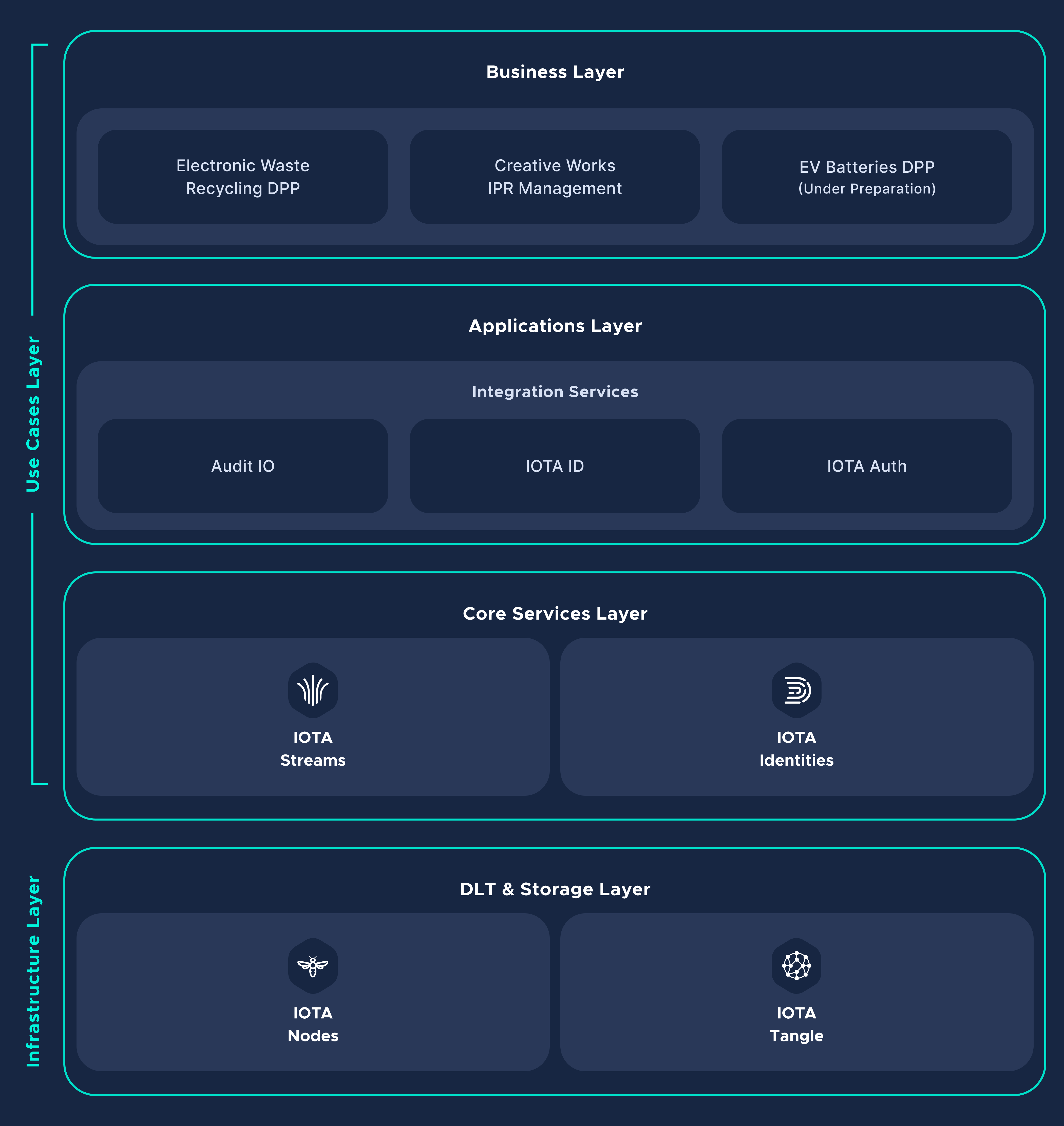
In summary, the following IOTA frameworks and developments can be used to build a DPP service:
- Integration Service is a framework developed to help with the integration of key IOTA protocol developments, with a high-level API for common interactions with decentralized identities and data streams based on the IOTA Identity and Streams libraries, facilitating the integration of IOTA into existing digital infrastructures. The solutions developed by the Integration Services are domain-agnostic and can be applied to use cases with CLI and Dashboard. The Integration Services Framework is composed of:
- IOTA Decentralized Identities (created and maintained using SSI Bridge)
- IOTA Streams (encrypted channels of data that are anchored on the blockchain).
- EPCIS 2.0 IOTA Protocol Adapter: EPCIS 2.0 The EPCIS Protocol adapter is a Javascript SDK (client-side- and Node.js-compatible) that sends the data to GS1 EPCIS 2.0-compliant repositories. It provides plenty of helper functions to make pushing standard-compliant supply chain events as easy as possible, namely: EPCIS events directly from devices and EVT EPCIS Zebra Device Edge SDK
The IOTA Foundation has taken several steps to help the open-source community use its technology to tackle DPP’s challenges around interoperability, scalability, energy efficiency, security, consensus, identity, and governance. To successfully cover the multiple domains that a DPP should service, the Foundation is working with industry partners in several areas: electronic waste recycling (European Blockchain EBSI), deposit return schemes for plastic recycling (European Blockchain EBSI), electric vehicles (H2020 CityXChange project), and raw materials (H2020 DIG_IT Project).
Conclusion
As we’ve seen, creating a Digital Product Passport (DPP) is a process of collecting information about a product during all stages of its lifecycle, and making the data available as digital information. To prevent this data from being tampered with, DLT should be used to secure the immutability of the data in the DPP. The IOTA DLT offers frameworks suitable for creating the traceability layer of the DPP, covering data integrity in an efficient and scalable manner with the Integration Service Framework and adapters that provide vocabularies for the supply chains.
If you are interested in creating DPPs, please check out our resources about the Integration Services and EPCIS 2.0 adapters. There is a dedicated Discord channel for #Integration Services which you can use as support in case of any questions.
Follow us on our official channels for the latest updates:
IOTA: Discord | Twitter | LinkedIn | Instagram | YouTube

